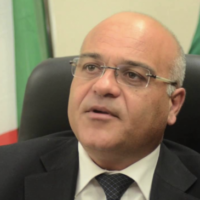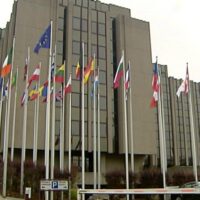Greece (Brussels Morning Newspaper), It’s fascinating how certain flowers can carry such deep meanings and associations in different cultures. The magnolia’s significance in North Korea grew as a symbol of filial piety and allegiance to parents, thanks to the narrative of Kim Jong-il presenting magnolias to his father, Kim Il-sung, who longed for them. In April 1991, this sentiment led to the formal declaration of the magnolia as North Korea’s national flower.
However, the nuclear procession of the country and the continuous military exercises are anything but beautiful and refined. They are usually accompanied by threatening announcements, where many analysts argue that they are encouraged by China, spreading fear among other Asian countries. The international community has isolated North Korea in recent years, and its leader is portrayed by the international media as a rather quaint political figure. However, the country’s military capabilities and its role or position in the region make it rather dangerous.
To assure readiness for North Korea’s nuclear and missile provocations, South Korea, Japan, and the United States performed pre-planned coordinated naval operations with an American aircraft carrier. The two-day exercises began in international waters between South Korea and Japan and included the aircraft carrier Theodore Roosevelt, destroyers Howard, Russell, and Daniel Inouye, as well as ships from both Asian nations.
The South Korean navy noted that these drills, which aim to improve their collective capabilities to fight North Korean threats, are part of a long-term cooperative exercise plan formed following last year’s trilateral summit. In addition, the three navies conducted maritime interdiction exercises to prevent North Korea from illegally transporting weapons of mass destruction, as well as search and rescue training to assist distressed ships.
“Through practical training, we were able to improve the joint operation capability to protect major ports and maritime routes from the threat of complex enemy mines in emergencies,” said Colonel Lee Taek-sun, the 52nd Mine Warfare Commander, according to a ROK navy release.
“Through this training as an opportunity, we will further develop the mine warfare joint response capability and joint operation procedures between the ROK and U.S. navies to be able to complete the given mission in any situation.”
The participating forces conducted anti-submarine warfare drills to improve their responses to North Korean underwater threats including from submarines and submarine-launched ballistic missiles.
“As the allies trained for both of those parts, this likely means that they practiced, first, an operation related to removing mines planted by North Korea in South Korean ports or waterways, and second, an operation to install mines in North Korea as well.” Yang Uk, a military analyst at the Seoul-based Asan Institute for Policy Studies, told NK News.
Another day at the office
The confrontation is escalating, and each time we see that the various alliances in the South China Sea are not limited to territorial disputes but have another purpose. To prove that China is not a global power but a regional revisionist power that is unable to bring other countries into an alliance beyond those ruled by dictators.
Members of the Moscow-Beijing-Pyongyang “authoritarian axis” may also feel compelled to oppose other US-led security alliances, such as AUKUS (Australia, the United Kingdom, and the United States), QUAD (Australia, India, Japan, and the United States), and NATO.
In response to North Korea’s missile launches, the United States, South Korea, and Japan conducted several cooperative ballistic missile defense drills this year.
At Camp David, the three countries agreed to conduct yearly multidomain trilateral exercises and share real-time missile warning data. They also agreed to consult as needed about military responses to common threats.
Patrick Cronin, the Asia-Pacific security chair at the Hudson Institute in Washington, stated that the presence of North Korean weapons could help the Russian army sustain itself in a largely stagnant fight in Ukraine.
However, Cronin pointed out that even in the absence of North Korean weapons, President Putin stands to benefit from the trilateral naval exercises. These maneuvers, he contended, might serve to shift global attention away from Ukraine by heightening security concerns among the United States and its Asian allies, diverting attention away from the current situation in Eastern Europe.



